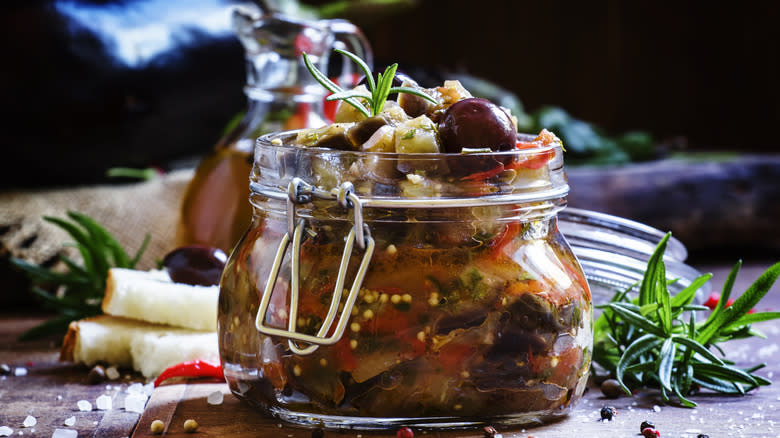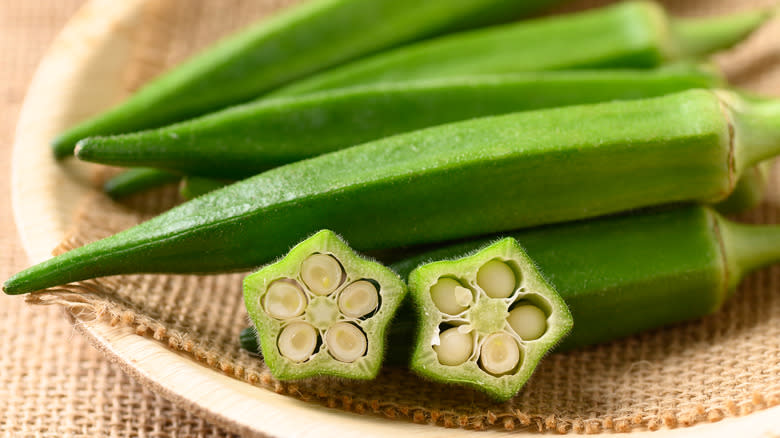The Unexpected Vegetable You Should Be Adding To Sicilian Caponata

Eggplant caponata is a Sicilian dish used as a pasta sauce or stewed veggie when fresh, transforming into an all-purpose condiment when stored in a jar. While the original recipe stews tomatoes, eggplants, and aromatics with capers and olives into chunky, saucy perfection, okra is the unexpected vegetable that will take your caponata to the next level.
Like tomatoes and eggplant, okra is a summer vegetable that'll make for an equally fresh seasonal addition to caponata. Its vegetal savoriness and chewy texture studded with the crunchy pop of its seeds will add a lot of depth to caponata. Plus, as a key ingredient in tomato and aromatic recipes like gumbo, you know that okra pairs well with those same overlapping ingredients in caponata. Okra will bestow the same textural benefits to caponata as it does to gumbo. Not only will rings of okra provide a chewy contrast to tender eggplant and saucy tomatoes, but the slimy mucilage okra emits will thicken the caponata as a whole.
While slime might be an off-putting characteristic, a stewed caponata will draw it out of the okra and incorporate it seamlessly into the surrounding liquid. The mucilage is flavorless and has a similar effect on crushed tomatoes as a cornstarch slurry — it'll make a fresh batch of caponata more substantial and a more cohesive condiment.
Read more: 26 Types Of Pasta Sauce Explained
How To Add Okra To A Caponata

Adding okra to caponata is a simple extra step with a big texture and flavor payoff. As a stewed dish, start caponata by frying aromatics and layering the veggies to cook, soften, and bloom before adding the stewing liquid. The okra will thus be the last veggie you add before introducing canned or fresh crushed tomatoes. Be sure to cut the okra into half-inch rounds before adding them to the saute. Cutting okra will activate the release of their slime, and so will the heat from the saute pan.
After frying until tender, you can add tomatoes, vinegar, and lemon juice and simmer for at least half an hour. As it turns out, acidic ingredients like vinegar and lemon juice help reduce the sliminess of okra. That said, the slime is a welcomed thickener for the cooking liquid. If you're opposed to mucilage, then you can add okra whole to your caponata. The thick skin of whole okra seals in the mucilage, and any potential seepage will be eliminated by the acidity from lemon juice, capers, and vinegar. You can also soak sliced okra in vinegar or lemon juice solutions to reduce the amount of mucilage before adding to your recipe.
You can turn the caponata into a main-course vegetarian stew with the addition of garbanzo beans. Pine nuts or diced pecans will give the caponata a pop of savory crunch. And you can also make an okra caponata without the eggplant.
Read the original article on Tasting Table.


